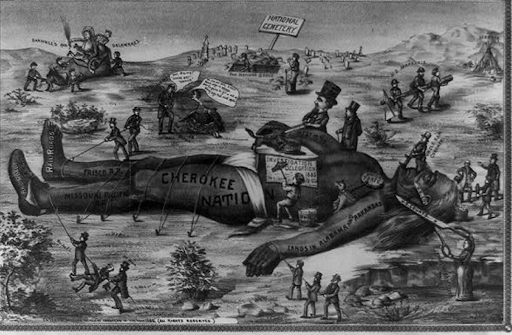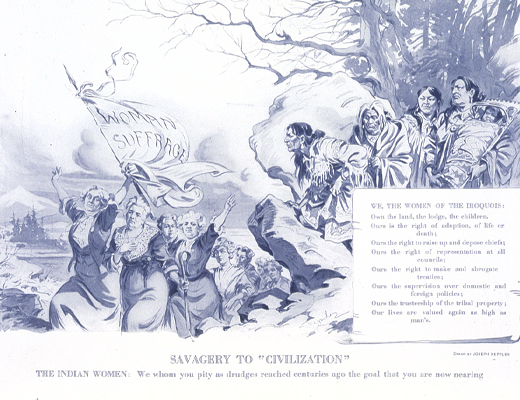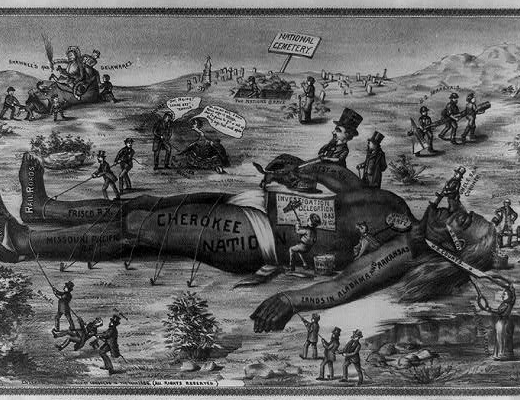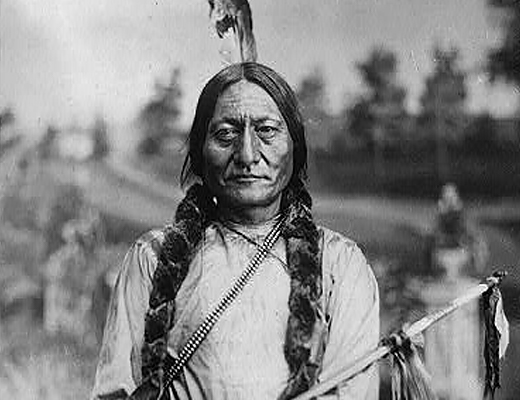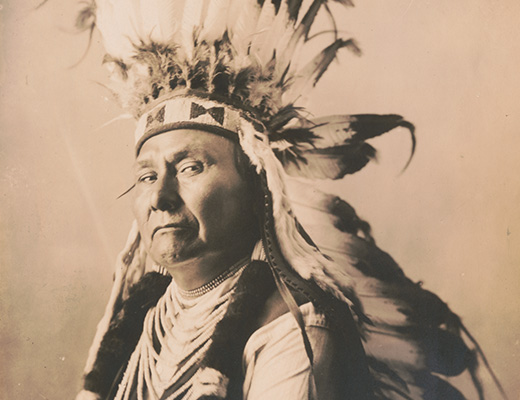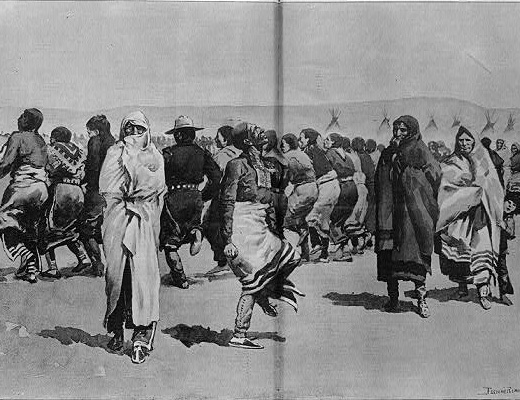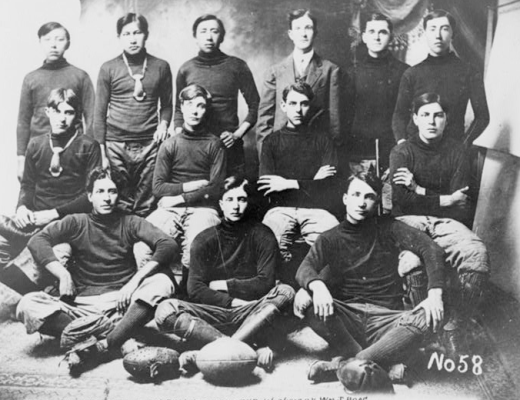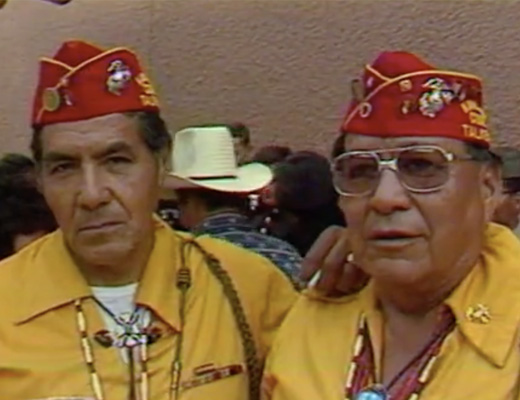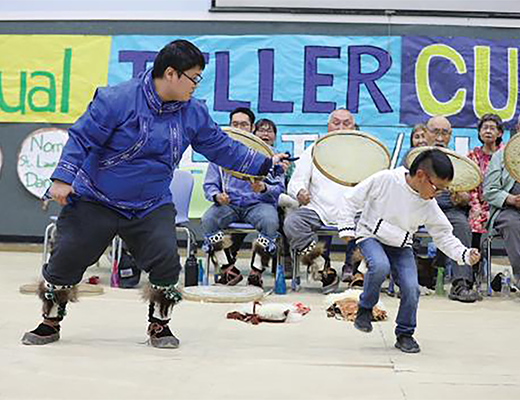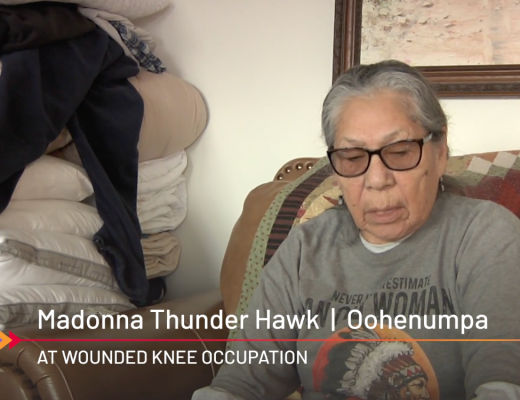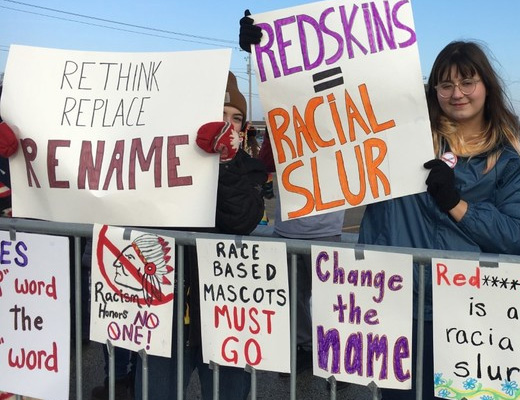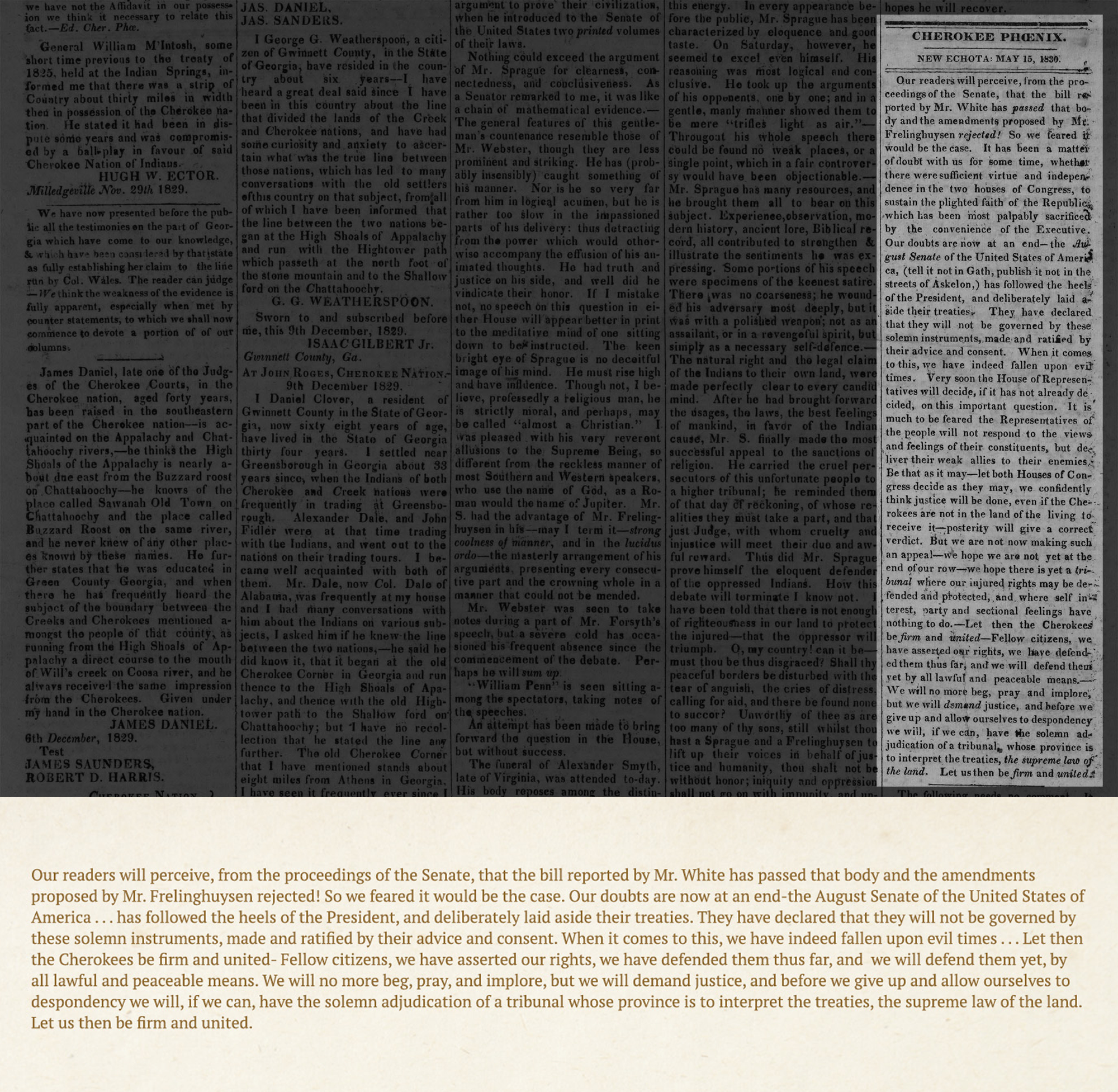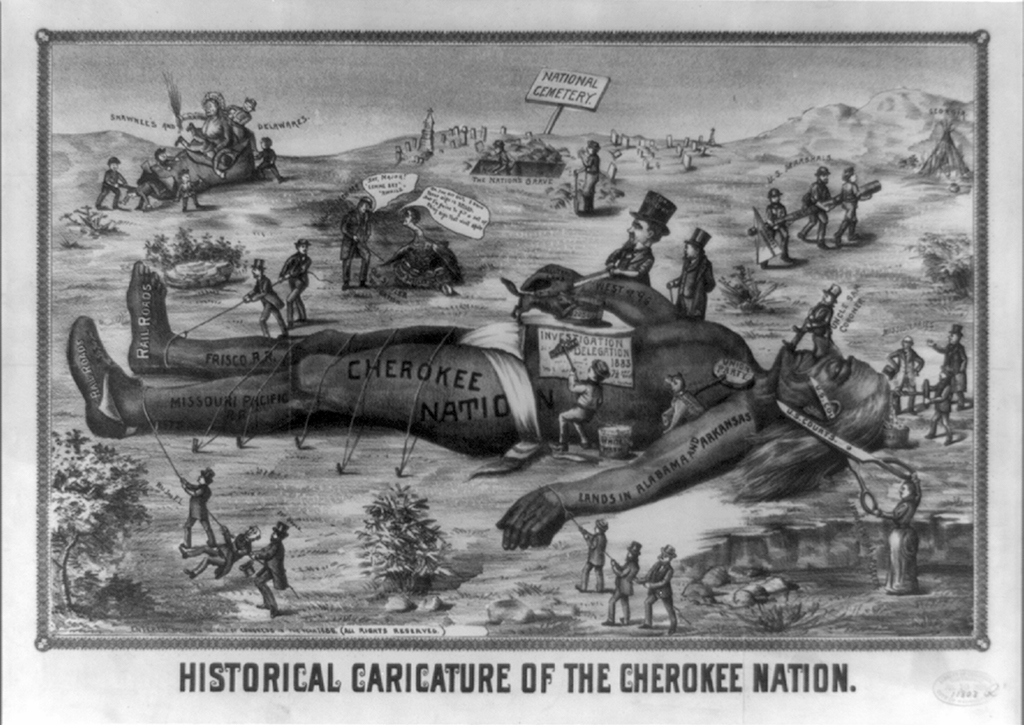From 1830 to 1850, the US government forced removal of tens of thousands of American Indians in the southern part of the United States to west of the Mississippi River. The forced migration began with President Andrew Jackson signing the Indian Removal Act in 1830 and the migration itself came to be known as the “Trail of Tears.”
Direction:
Use the magnifier to take a close look at the note from the editor in the far right column of the Cherokee Phoenix and Indians’ Advocate.
Scroll to the last column all the way on the right until you see the bolded and all capitalized heading “CHEROKEE PHOENIX.” Underneath “CHEROKEE PHOENIX,” it says “NEW ECHOTA: MAY 15, 1830.”
See the Text Version below:
“Cherokee Phoenix: New Echota, GA, May 15, 1830, Cherokee Phoenix and Indians’ Advocate. Library of Congress
Questions
Annotate this Image
Directions: Take a look at this newspaper story from the Alexandria Gazette regarding an incident at Fort Cass in Tennessee, which was the location of a stockade where Cherokee people were detained prior to the Removal.
Scroll to the second column from the left until you see the bolded heading “Cherokee Indians.” Underneath “Cherokee Indians,” it says, “ Fort Cass (Tenn.) Nov. 4, 1938.”
See the Text Version below:
Use the annotation tool to respond to the following questions:
- What do you notice as you read the article?
- What was the mission of Lieutenant Smith? Was he able to complete this mission?
- What clues tell you about the perspective or bias of the writer?
Source: “Cherokee Indians,” November 21, 1838, The Alexandria Gazette. Library of Congress
Use the toggle button above to switch to Magnify Mode. Magnify mode will help you see finer detail in the image.
Switch back to Annotate Mode to create your annotations with click and drag.

Your Annotations
Puzzler
Directions: Take a look at the different sections of the image one by one and answer the question that accompanies each section. At the end, you will see the completed image.
Source: Library of Congress

Cropped Image 1
Name two specific things you notice about this part of the image. You can write about color, size, composition, proportions, or anything else you notice.
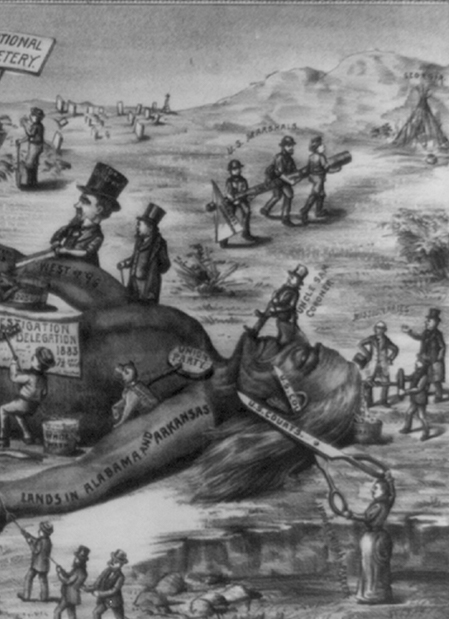
Cropped Image 2
What do you notice in the foreground (bottom of section) of this part of the image? What do you notice in the background (top of section) of this part of the image?

Cropped Image 3
Whose gigantic legs are in this portion of the image? Who might be holding the ropes? What might be the purpose of the ropes?
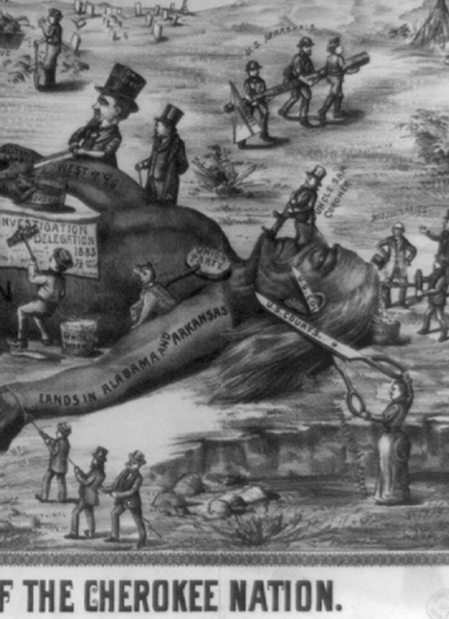
Cropped Image 4
Why do you think someone is cutting the hair of the large lying down person? What does this act represent?
